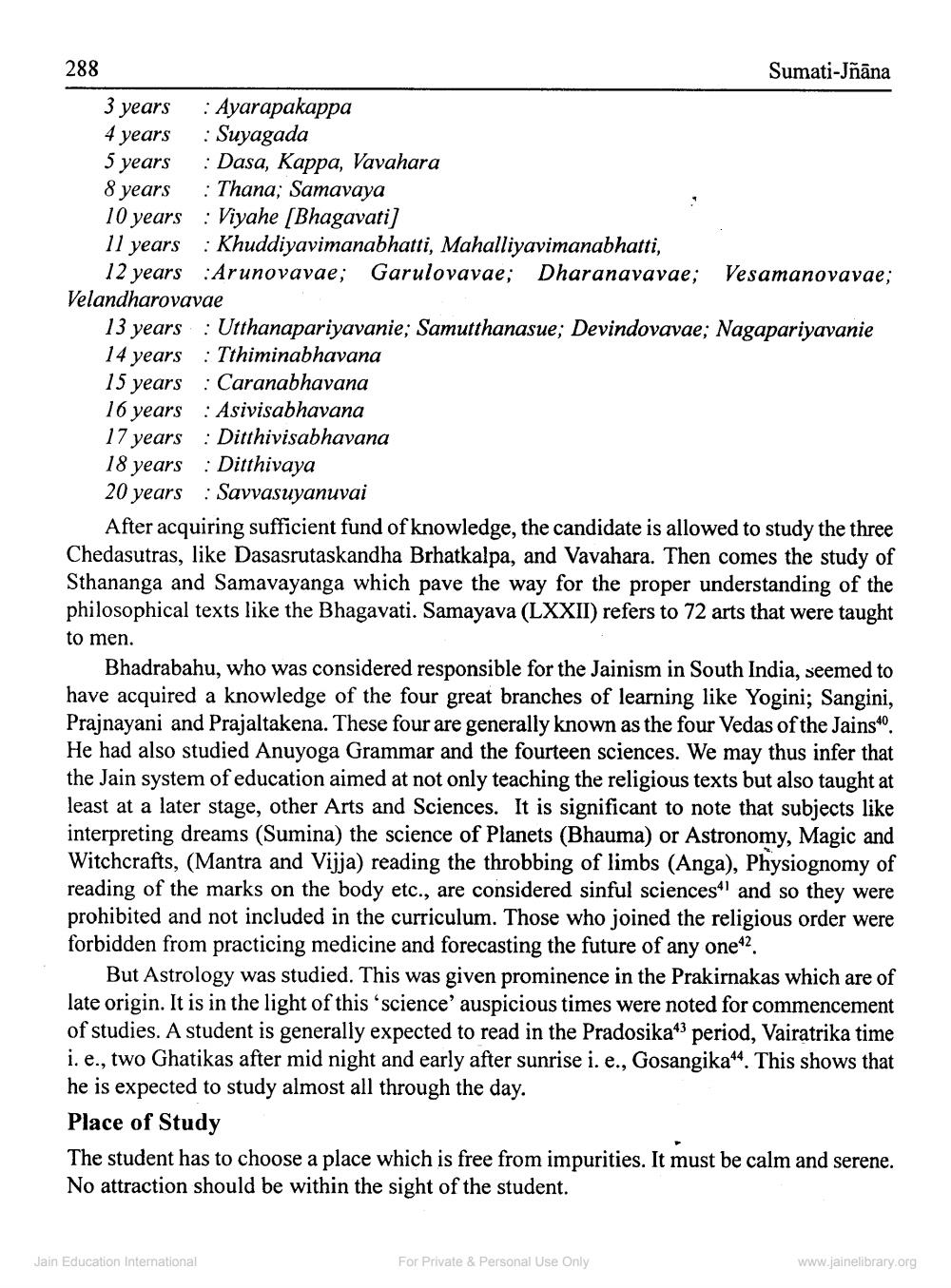________________
288
3 years
4 years
5 years
8 years
10 years
11 years 12 years Velandharovavae
15 years
16 years
17 years
: Ayarapakappa
: Suyagada
: Dasa, Kappa, Vavahara Thana; Samavaya
: Viyahe [Bhagavati]
: Khuddiyavimanabhatti, Mahalliyavimanabhatti, Arunovavae; Garulovavae; Dharanavavae;
13 years: Utthanapariyavanie; Samutthanasue; Devindovavae; Nagapariyavanie 14 years Tthiminabhavana
Caranabhavana
: Asivisabhavana
: Ditthivisabhavana
18 years: Ditthivaya
20 years : Savvasuyanuvai
Sumati-Jñāna
Jain Education International
Vesamanovavae;
After acquiring sufficient fund of knowledge, the candidate is allowed to study the three Chedasutras, like Dasasrutaskandha Brhatkalpa, and Vavahara. Then comes the study of Sthananga and Samavayanga which pave the way for the proper understanding of the philosophical texts like the Bhagavati. Samayava (LXXII) refers to 72 arts that were taught
to men.
Bhadrabahu, who was considered responsible for the Jainism in South India, seemed to have acquired a knowledge of the four great branches of learning like Yogini; Sangini, Prajnayani and Prajaltakena. These four are generally known as the four Vedas of the Jains40. He had also studied Anuyoga Grammar and the fourteen sciences. We may thus infer that the Jain system of education aimed at not only teaching the religious texts but also taught at least at a later stage, other Arts and Sciences. It is significant to note that subjects like interpreting dreams (Sumina) the science of Planets (Bhauma) or Astronomy, Magic and Witchcrafts, (Mantra and Vijja) reading the throbbing of limbs (Anga), Physiognomy of reading of the marks on the body etc., are considered sinful sciences11 and so they were prohibited and not included in the curriculum. Those who joined the religious order were forbidden from practicing medicine and forecasting the future of any one12.
But Astrology was studied. This was given prominence in the Prakirnakas which are of late origin. It is in the light of this 'science' auspicious times were noted for commencement of studies. A student is generally expected to read in the Pradosika43 period, Vairatrika time i. e., two Ghatikas after mid night and early after sunrise i. e., Gosangika44. This shows that he is expected to study almost all through the day.
Place of Study
The student has to choose a place which is free from impurities. It must be calm and serene. No attraction should be within the sight of the student.
For Private & Personal Use Only
www.jainelibrary.org




